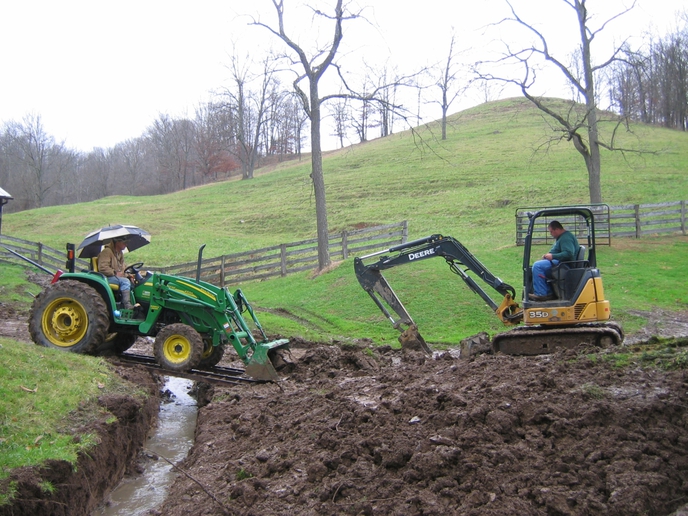Experienced Tree Removal for Building Security
Wiki Article
Culvert Setup Facilitated: Step-by-Step Overview for Success
Mounting culverts may appear like a straightforward task, but making sure an effective end result calls for careful planning and execution. From choosing the proper culvert dimension to incorporating correct drainage measures, each step in the installation process plays a vital function in the capability and long life of the culvert system. By adhering to a systematic technique and taking note of vital information, the installment can continue smoothly, lessening prospective problems down the line. Stay tuned to uncover the important actions and factors to consider that can make culvert installment a smooth and successful endeavor.Picking the Right Culvert Size
Selecting the ideal culvert size is essential for ensuring reliable water flow and architectural integrity in culvert installment jobs - Pad Construction. The dimension of the culvert directly impacts the circulation ability of water with the structure. A culvert that is as well tiny can lead to flooding and overflow, while one that is too huge might lead to lowered water rate, potentially creating sediment buildup and clogsTo figure out the right culvert dimension, variables such as the watershed location, top circulation rates, and hydraulic effectiveness requirement to be meticulously thought about. Calculations based on these specifications aid in picking a size that can adequately manage the expected water volume while minimizing the danger of clogs and architectural failing.
It is important to get in touch with design standards and standards to guarantee that the selected culvert dimension fulfills the job needs and local guidelines (Pad Construction). By picking the right culvert dimension, task managers can optimize water flow, avoid possible concerns, and improve the general efficiency and longevity of the culvert installment
Preparing the Installment Website
Reliable culvert setup demands precise prep work of the installment site to make sure optimal architectural support and capability. Prior to starting the installation process, it is crucial to clear the website of any debris, plant life, or blockages that might restrain the culvert's positioning. Ensuring a level foundation is important for the appropriate alignment and stability of the culvert. This might involve rating the website to develop a smooth, also surface that can effectively sustain the weight of the culvert and any kind of anticipated lots. Additionally, proper compaction of the dirt beneath the culvert is essential to avoid working out or changing over time.Furthermore, it is essential to take into consideration elements such as soil structure, groundwater levels, and environmental impacts when preparing the installation website. Performing a detailed site assessment can aid determine any kind of possible difficulties or dangers that might impact the culvert's efficiency. By taking the time to prepare the installment site correctly, you can assist assure an effective culvert installment that satisfies structural requirements and guarantees long-lasting functionality.
Positioning the Culvert Properly

The quality at which the culvert is placed is crucial for keeping a proper slope for water circulation. A progressive slope aids stop merging and promotes efficient drain. In addition, the culvert should be oriented correctly to make sure that the inlet and outlet are in the appropriate places. This positioning is crucial for the culvert to function properly in handling water circulation.
Backfilling and Compacting the Soil
Proper backfilling and compaction of the soil around the culvert is necessary to make sure stability and avoid possible issues in the future. Once the culvert is correctly put, the following critical action is to backfill the location around it with suitable material. The backfill material need to be free from rocks, particles, and raw material to avoid damages to the culvert. It is suggested to utilize granular material Bonuses such as sand or gravel for backfilling, as it supplies good drainage and compaction properties.Compaction aids in reducing the opportunities of settlement and makes certain uniform support around the culvert. It is essential to small the dirt uniformly on all sides of the culvert to keep its structural honesty.
Appropriate backfilling and compaction not only give stability to the culvert however additionally help in protecting against soil disintegration and keeping the longevity of the culvert system.
Making Sure Proper Drain Assimilation
Integrating effective drainage options plays an essential duty in the general capability and longevity of culvert setups. Proper water drainage integration is necessary for managing water flow, stopping disintegration, and ensuring the structural honesty of the culvert system. To achieve this, it is important to make a detailed water drainage strategy that considers elements such as the volume of water expected, the topography of the area, and the type of soil present.
Furthermore, integrating functions like erosion control actions, such as riprap or plants, can even more boost the performance of the drain system. By very carefully intending and executing these drainage remedies, culvert installments can work efficiently and hold up against the test of time.
Conclusion
In final thought, correct culvert setup is essential for keeping effective drainage systems. By selecting the appropriate culvert size, preparing the installment site, positioning the culvert appropriately, backfilling and compacting the dirt, and ensuring proper drain integration, success can be attained. go to website Following these steps will certainly help make sure the durability and performance of the culvert, eventually adding to the general success of the drainage system.Report this wiki page